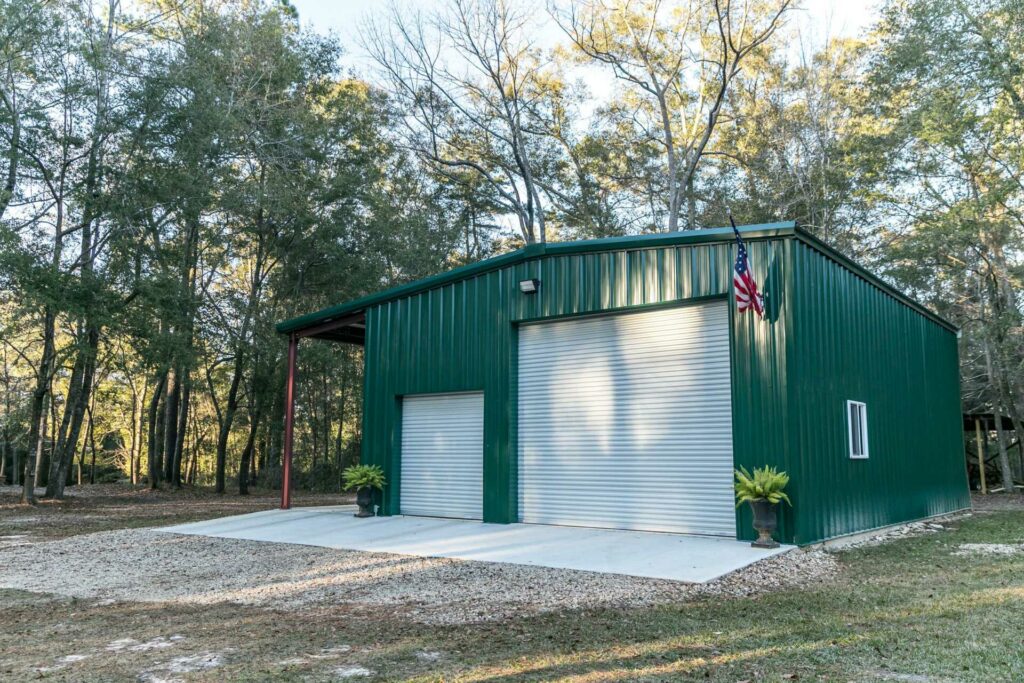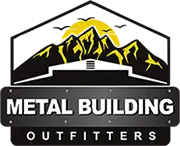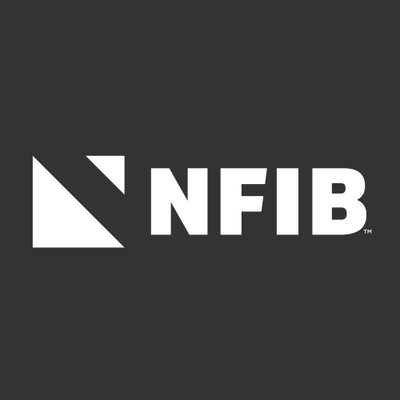
Contents
When considering cost-effective engineering solutions for metal structures, you may not be aware of the intricate balance required between material selection, load analysis, and construction methods to achieve both durability and affordability. By understanding how each element impacts the overall project cost and performance, you can make informed decisions that maximize efficiency and minimize expenses. Stay tuned to discover key strategies and creative approaches that can transform the way metal structures are designed and built, ultimately leading to significant cost savings without compromising quality.
Key Takeaways
- Optimize material selection for performance and cost efficiency.
- Implement sustainable foundation options for eco-friendliness and affordability.
- Integrate energy-efficient HVAC systems for cost savings.
- Utilize advanced technology for precision fabrication and reduced production costs.
- Ensure compliance with industry codes for safety and structural integrity.
Structural Analysis and Design Considerations
When analyzing and designing metal structures, it’s important to take into account various factors such as load distribution, material properties, and environmental conditions to ensure structural integrity and safety.
Load analysis plays a key role in determining the forces that the structure will encounter during its lifespan. This analysis involves evaluating dead loads (permanent non-moving forces like the weight of the structure itself), live loads (temporary forces such as occupants and furniture), and environmental loads (wind, snow, seismic forces).
Seismic design is crucial, especially in regions prone to earthquakes. Engineers need to consider the seismic forces that act horizontally on structures and design them to withstand such forces.
Beam sizing is another vital aspect of structural design. Properly sized beams ensure that they can carry the required loads without failing.
Connection detailing is equally significant; the way beams, columns, and other structural elements are connected can greatly impact the overall stability and safety of the structure.
Efficient Material Selection for Cost Savings
Consider optimizing material selection to achieve cost savings in engineering metal structures by evaluating factors such as material properties, performance requirements, and economic considerations.
Material optimization plays an important role in designing cost-effective structures. Start by thoroughly understanding the project’s requirements, including load-bearing capacity, durability, and environmental factors. You can ensure a cost-effective design that meets all specifications by aligning material properties with performance needs.
Budget planning is essential in selecting the most suitable materials. Conduct a detailed cost analysis of different material options, considering initial expenses, maintenance costs, and longevity. By choosing materials that strike a balance between quality and affordability, you can achieve significant cost savings without compromising structural integrity.
When designing for cost efficiency, sustainability factors should also be considered. Opt for materials that aren’t only cost-effective but also eco-friendly. Selecting recyclable or locally sourced materials can reduce both expenses and the project’s carbon footprint, aligning with sustainable engineering practices.
Sustainable Foundation Options for Metal Buildings
Enhance the longevity of metal structures by carefully selecting foundation options that align with eco-friendly practices and cost-effective solutions. When pondering sustainable foundation choices for metal buildings, it’s essential to prioritize green foundation options that decrease environmental impact and offer cost-effective sustainability.
Eco-conscious solutions, such as using repurposed materials for foundations, can greatly lower a building’s carbon footprint while keeping costs in check.
One key factor to consider when choosing sustainable foundation options is to opt for wallet-friendly selections that support eco-friendly practices. Methods such as using locally acquired materials or integrating inventive foundation designs can contribute to both environmental sustainability and cost-effectiveness.
Green foundation options like using permeable pavers or implementing slab-on-grade foundations with reused content can be excellent choices for diminishing the environmental impact of the building while staying within budget constraints.
Energy-Efficient HVAC Systems Integration
Implementing energy-efficient HVAC systems integration maximizes operational efficiency and minimizes energy consumption in metal structures. HVAC optimization plays an essential role in ensuring a comfortable indoor environment while reducing energy costs.
Energy savings techniques such as variable air volume (VAV) systems, demand-controlled ventilation, and energy recovery ventilation can greatly enhance the overall efficiency of HVAC systems in metal structures.
VAV systems regulate the airflow based on the specific requirements of different zones within a building, allowing for precise temperature control and reduced energy wastage.
Demand-controlled ventilation adjusts the ventilation rates according to the space’s actual occupancy, optimizing air quality while conserving energy.
Energy recovery ventilation systems capture and reuse heat energy from the exhaust air to precondition incoming fresh air, minimizing the load on heating and cooling systems.
Advanced Technology for Precision Fabrication
Utilize cutting-edge technology for precise fabrication in metal structures to enhance production efficiency and quality control. Regarding advanced technology for precision fabrication, robotics integration and laser cutting play pivotal roles in achieving high levels of accuracy and quality in metal fabrication processes. Robotics integration allows for automated, repeatable tasks, reducing human error and increasing efficiency. Laser cutting, on the other hand, offers unparalleled precision and versatility in shaping metal components.
To understand how these technologies impact precision manufacturing in metal fabrication, let’s take a closer look at their key features:
| Feature | Description | Benefit |
|---|---|---|
| Robotics Integration | Automated, repeatable tasks | Reduces human error, increases efficiency |
| Laser Cutting | High precision cutting technology | Enables intricate designs, minimizes material waste |
| Quality Control | Real-time monitoring and inspection capabilities | Ensures consistent quality throughout production |
| Cost Efficiency | Streamlined processes reduce production costs | Enhances overall cost-effectiveness |
| Versatility | Capability to work with various metal types | Adaptable to diverse project requirements |
Streamlined Construction Processes for Time Efficiency
You need to focus on efficient workflow management and the integration of time-saving technology to streamline construction processes for maximum time efficiency. By optimizing how tasks are organized and executed, you can substantially reduce project timelines and improve overall productivity.
Incorporating advanced technology into your construction methods can further enhance efficiency, ensuring that your metal structures are completed in a timely manner.
Efficient Workflow Management
Effective workflow management in metal structure engineering involves optimizing construction processes to enhance time efficiency and overall project productivity. Workflow optimization is key to achieving cost control and meeting project deadlines.
To streamline construction processes, it’s essential to establish clear communication channels among team members, allocate resources effectively, and set realistic timelines for each phase of the project. You can minimize delays and ensure smooth progress throughout the construction process by implementing efficient workflow management strategies, such as using standardized procedures and incorporating quality control checkpoints.
Furthermore, identifying potential bottlenecks in the workflow and addressing them proactively can prevent costly interruptions and keep the project on course. Regularly reviewing and adjusting the workflow based on project updates and feedback from team members can further improve efficiency and productivity.
Time-saving Technology Integration
To enhance time efficiency and streamline construction processes in metal structure engineering, integrating time-saving technologies is essential for achieving the best project productivity. Technology advancements have transformed the way metal structures are designed and constructed, offering creative solutions to improve projects effectively.
By incorporating advanced software tools for 3D modeling and simulation, engineers can visualize the entire construction process before the ground is broken, identifying potential bottlenecks and streamlining workflows. These tools enable real-time collaboration among team members, leading to quicker decision-making and smoother project execution.
Moreover, the integration of prefabrication technologies allows for the off-site assembly of components, reducing on-site construction time significantly. Advanced robotics and automation further enhance efficiency by speeding up repetitive tasks and ensuring precision in assembly.
Compliance With Industry Standards and Codes
When engineering metal structures, you must strictly adhere to industry codes and standard compliance measures. This is crucial to securing the safety, durability, and functionality of the structures you design.
Industry Codes Adherence
Adhering to industry codes and standards is crucial for maintaining the structural integrity and safety of metal structures. Regulatory compliance is more than just a box to tick; it’s the foundation of a safe and reliable structure.
Inspection protocols are designed to identify any deviations from these codes early on, preventing potential hazards and costly repairs down the road. Code adherence goes beyond a mere requirement; it’s a commitment to the well-being of those who interact with the structure.
Safety measures outlined in these codes are meticulously developed based on industry knowledge and past experiences to reduce risks effectively. By diligently following these guidelines, you aren’t solely meeting legal obligations but also prioritizing the security of the structure and its occupants.
Embracing industry codes ensures that your metal structure is constructed to withstand various pressures and forces it may face throughout its lifespan, offering peace of mind and durability.
Standard Compliance Measures
Industry standards and codes play a fundamental role in maintaining metal structures’ structural integrity and safety. Compliance with these regulations is essential for preserving quality assurance and upholding safety standards in engineering practices.
When it comes to standard compliance measures, the following points are pivotal:
Safety Regulations: Adhering to safety regulations set forth by industry standards ensures that metal structures are designed and constructed with the utmost consideration for the well-being of individuals and the environment.
Quality Assurance: Implementing quality assurance measures ensures that metal structures meet the required standards of durability, functionality, and safety, providing long-lasting and reliable solutions.
Compliance Audits and Inspection Protocols: Regular compliance audits and inspection protocols help verify that metal structures conform to industry codes, identify potential issues early on, and maintain overall structural integrity.
Recap
By carefully selecting materials, like a skilled sculptor choosing the perfect chisel, engineers can carve out cost-effective solutions for metal structures.
Integrating eco-friendly foundations and energy-efficient HVAC systems is akin to adding the finishing touches to a masterpiece.
With advanced fabrication technologies and streamlined construction processes, the blueprint for success is clear.
By adhering to industry standards like a well-oiled machine, engineers can construct metal structures that stand the test of time while keeping costs in check.
Recent Posts
Building Strong Steel Structures for Heavy Machinery
When constructing steel structures to support heavy machinery, precision is key. Each element, from the
Efficient Construction of Large Metal Warehouses
When it comes to the optimization of building substantial metal storage facilities, one must consider
Why Choose Energy-Efficient Metal Warehouse Construction?
When it comes to selecting the construction method for your warehouse, choosing energy-saving metal construction


